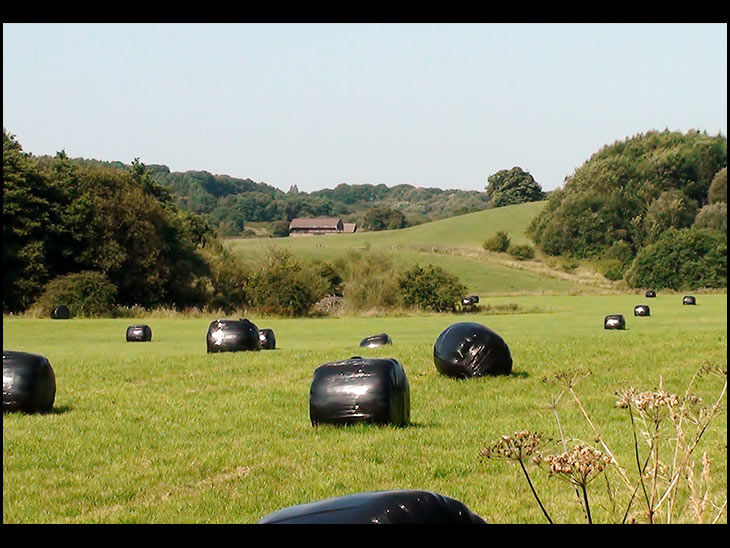Photo-a-Day (Wednesday, 6th August, 2014)
Wrapped
It's that time of year again, nice shot Mick.
Lovely with the sun's reflection that you have captured in this shot
I love seeing bales in farmers field wrapped in plastic, I think they really make a nice contrast to the rest of the surrounding countryside.
Ive seen Black, Blue and Green plastic so far when Im on my travels but I think one of these days some bright young enterprising wiz kid who works for an advertising company will come up with the idea on using these plastic wrapped bales for putting adverts and logos on.
When we were in the Yorkshire dales for the Tour de France, a lot of the bales were wrapped in Wensleydale cheeses wrappers, just looked like a mammoth version of the ones in the shops!
I think you are mistaken Burtsdpieeater, this is obviously a balck pudding farm.
Superb photo.
I wonder if that plastic gets recycled?
They are actually black pudding eggs, laid by the giant black pudding bird from New Zealand.
Great photo, Mick. At first glance I thought it was taken in Switzerland.
ever seen Canadian Poop, same size different color
Wensleydale cheeses wrappers and Black pudding are a great ideas.
I was thinking they could be easily made to look like Polo mints
Extraxt from:-
http://en.wikipedia.org/wiki/Hay
Large bales.
Many farmers, particularly those who feed large herds, have moved to balers which produce much larger bales, maximizing the amount of hay which is protected from the elements. Large bales come in two types, round and square. "Large Square" bales, which can weigh up to 1,000 kilograms (2,200 lb), can be stacked and are easier to transport on trucks. Round bales, which typically weigh 300 to 400 kilograms (660–880 lb), are more moisture-resistant, and pack the hay more densely (especially at the center). Round bales are quickly fed with the use of mechanized equipment.
The ratio of volume to surface area makes it possible for many dry-area farmers to leave large bales outside until they are consumed. Wet-area farmers and those in climates with heavy snowfall can stack round bales under a shed or tarp, but can also use a light but durable plastic wrap that partially encloses bales left outside. The wrap repels moisture, but leaves the ends of the bale exposed so that the hay itself can "breathe" and does not begin to ferment. However, when it is possible to store round bales under a shed, they last longer and less hay is lost to rot and moisture.
Ernest by wrapping them in plastic the farmers dont need barns anymore to store them, thats why you see all these barns being made into houses
Less chance of someone setting fire to the plastic bales/barns.
There`s tidy for you, as the welsh would say!
There used to be a lot of barn fires, not necessarily arson. Hay can self combust under certain conditions.
